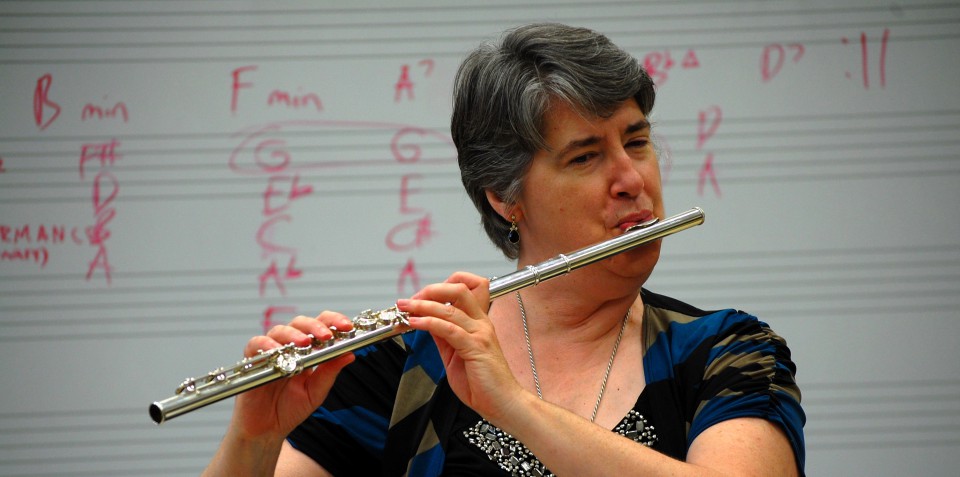Once you have confidence that your students know how to blow with a steady air stream in at least two or more octaves of the flute, it’s time to help them develop a dynamic palette from piano to forte, so they can begin to practice and understand balance and style. How many of you have tried teaching your students to play more quietly only to have a host of weird compensating behaviors magically appear, not to mention having the pitch go haywire? Things like:
- Pinched aperture, shrill tone and sharp pitch
- Rolling in/covering to much of the blow hole, dull tone and flat pitch
- Clenched teeth, tight sound lacking resonance, probably sharp
- Tight throat, strangled, dull tone and probably flat
- Slow air resulting in flat pitch, trouble placing and controlling high notes, thin, bleating tone
Ok, so the problem with all of these “solutions” is they miss the point that makes the difference and you wind up with all kinds of compensations that just make a poor situation worse. The point is to understand that there is a difference between the quantity of air and the speed of the air. Youngsters and anyone who doesn’t really ‘get’ flute have trouble conceptualizing the difference between air quantity and air speed. In fact, for kids speed and quantity are the same thing. The way I explain it is that until you understand better, air speed and air quantity function like a bad marriage, needy and codependent. One cannot exist without the other, but to the detriment of the both partners.
In order for a player to be able to control dynamics and pitch, air speed and air quantity need to get a divorce and be able to operate as separate entities. The speed of the air stream has to be maintained (supported) while the quantity of air determines the relative volume of the sound. You need to maintain the air speed/pressure using the abdominal muscles while decreasing the quantity of air you are blowing. Here are a couple other concepts to incorporate into the mix to get good dynamic and pitch control:
- Maintain the oval shape of the aperture without flattening it out
- Maintain the position of the flute on your lip without rolling in or out
- The less air you blow, the more you need to raise the blowing angle towards more straight across the blow hole to maintain pitch
- Keep back teeth apart and mouth cavity open
- Keep a relaxed and open throat. Think of how your throat feels right on the edge of yawning
- Keep the speed of the air, just less air
As always, if you find these entries useful, please subscribe, share with your colleagues and come back regularly. Feel free to comment. If you have a topic you would like to see explored more fully, you can contact me via IM/Messenger on Facebook or email me at dr_cate@sbcglobal.net. For information about clinics, workshops and performances, click here.

Pingback: The Dreaded Nay Palm | Dr. Cate's Flute Tips
Pingback: Favorite blog posts, February 2017 | Bret Pimentel, woodwinds
I am a self-taught adult beginner. I find a lot of your posts helpful, but I am still confused about the issue of aperture size + air speed + air volume. In some of your posts, you suggest to keep the size of the aperture and the air speed roughly constant across octaves and dynamic levels, ant to vary mostly/only the volume of the air. But that is physically impossible, because by the laws of physics, the amount of air that will pass through an opening is equal to the size of that opening times the speed of the air https://ka-perseus-images.s3.amazonaws.com/1ed502672a1583ad6bb57e2c9fb380a9b024fc69.png. So if both the size of the aperture and the air speed were (roughly) constant, the air volume would also be (roughly) constant. I understand that it may make sense to try to keep the two constant in order to avoid too greater changes of the aperture/speed than needed; but for someone who has studied physics, the simplified explanation is just plain confusing!
LikeLike
Thanks for your comment, Anna. Give me a couple days to give you a proper reply. I do want to address your comment more fully.
LikeLike